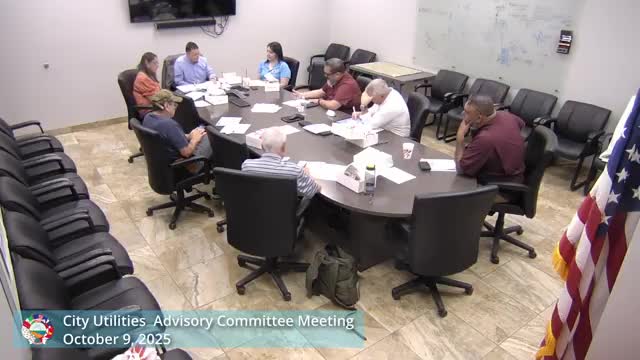Laredo staff press senate-scale options for second water source, emphasize emergency resilience
October 10, 2025 | Laredo, Webb County, Texas
This article was created by AI summarizing key points discussed. AI makes mistakes, so for full details and context, please refer to the video of the full meeting. Please report any errors so we can fix them. Report an error »

LAREDO — Laredo Utilities staff briefed the advisory committee on Thursday about options under study to provide the city with a second or emergency water source, describing projects that range from local desalination concepts to a 110-mile pipeline from a fresh aquifer.
The department said it is evaluating several approaches and emphasized that the city needs a short-term emergency source in addition to long-range capacity. “My goal, my strategy is what would we do if we had the river not usable for a for two weeks at least?” Dr. G told the committee.
Options discussed included a so-called “legacy project”—a large-scale drilling and conveyance program led by outside partners that is still in early assessment phase—and a memorandum of understanding with counties farther north that could access a fresh aquifer roughly 110–120 miles away. Dr. G said early, nonfinal cost estimates associated with a region-scale pipeline are large: the legacy project’s initial funding exercise listed roughly $160 million in pipeline-related needs, and building a regional pipeline to deliver sizable fresh volumes could reach “between a half a billion to a billion dollars,” he said.
Staff also highlighted a reuse option tied to local wastewater flows: the city currently treats roughly 23 million gallons per day of wastewater that is discharged downstream; staff suggested capturing and redirecting some treated effluent to nearby Lake Casablanca and, after blending and treatment, returning it to the potable supply as a way to secure tens of millions of gallons a day without new raw-water sources.
Why it matters: Committee members and staff framed the risk as one of water quality rather than immediate volume: heavy turbidity or algal events in the Rio Grande can force water treatment plant shutdowns even when overall water rights or volume exist. “Most of the cities that I’ve been in got shut down not because of volume, because the got a a fire where all the debris or the carbon or the grama got followed by a flood…It’s not a matter of if…it’s a matter of when,” Dr. G said.
Staff said the city currently produces and uses roughly 35 million gallons a day and has a maximum permitted capacity near 55 million gallons a day; those figures shaped staff’s argument that reuse and emergency sources are central to near-term resilience.
No formal decision was taken; staff said engagements with funding partners, Corps of Engineers and regional municipalities are ongoing and that the committee should prioritize emergency availability as the immediate goal.
The department said it is evaluating several approaches and emphasized that the city needs a short-term emergency source in addition to long-range capacity. “My goal, my strategy is what would we do if we had the river not usable for a for two weeks at least?” Dr. G told the committee.
Options discussed included a so-called “legacy project”—a large-scale drilling and conveyance program led by outside partners that is still in early assessment phase—and a memorandum of understanding with counties farther north that could access a fresh aquifer roughly 110–120 miles away. Dr. G said early, nonfinal cost estimates associated with a region-scale pipeline are large: the legacy project’s initial funding exercise listed roughly $160 million in pipeline-related needs, and building a regional pipeline to deliver sizable fresh volumes could reach “between a half a billion to a billion dollars,” he said.
Staff also highlighted a reuse option tied to local wastewater flows: the city currently treats roughly 23 million gallons per day of wastewater that is discharged downstream; staff suggested capturing and redirecting some treated effluent to nearby Lake Casablanca and, after blending and treatment, returning it to the potable supply as a way to secure tens of millions of gallons a day without new raw-water sources.
Why it matters: Committee members and staff framed the risk as one of water quality rather than immediate volume: heavy turbidity or algal events in the Rio Grande can force water treatment plant shutdowns even when overall water rights or volume exist. “Most of the cities that I’ve been in got shut down not because of volume, because the got a a fire where all the debris or the carbon or the grama got followed by a flood…It’s not a matter of if…it’s a matter of when,” Dr. G said.
Staff said the city currently produces and uses roughly 35 million gallons a day and has a maximum permitted capacity near 55 million gallons a day; those figures shaped staff’s argument that reuse and emergency sources are central to near-term resilience.
No formal decision was taken; staff said engagements with funding partners, Corps of Engineers and regional municipalities are ongoing and that the committee should prioritize emergency availability as the immediate goal.
View full meeting
This article is based on a recent meeting—watch the full video and explore the complete transcript for deeper insights into the discussion.
View full meeting
